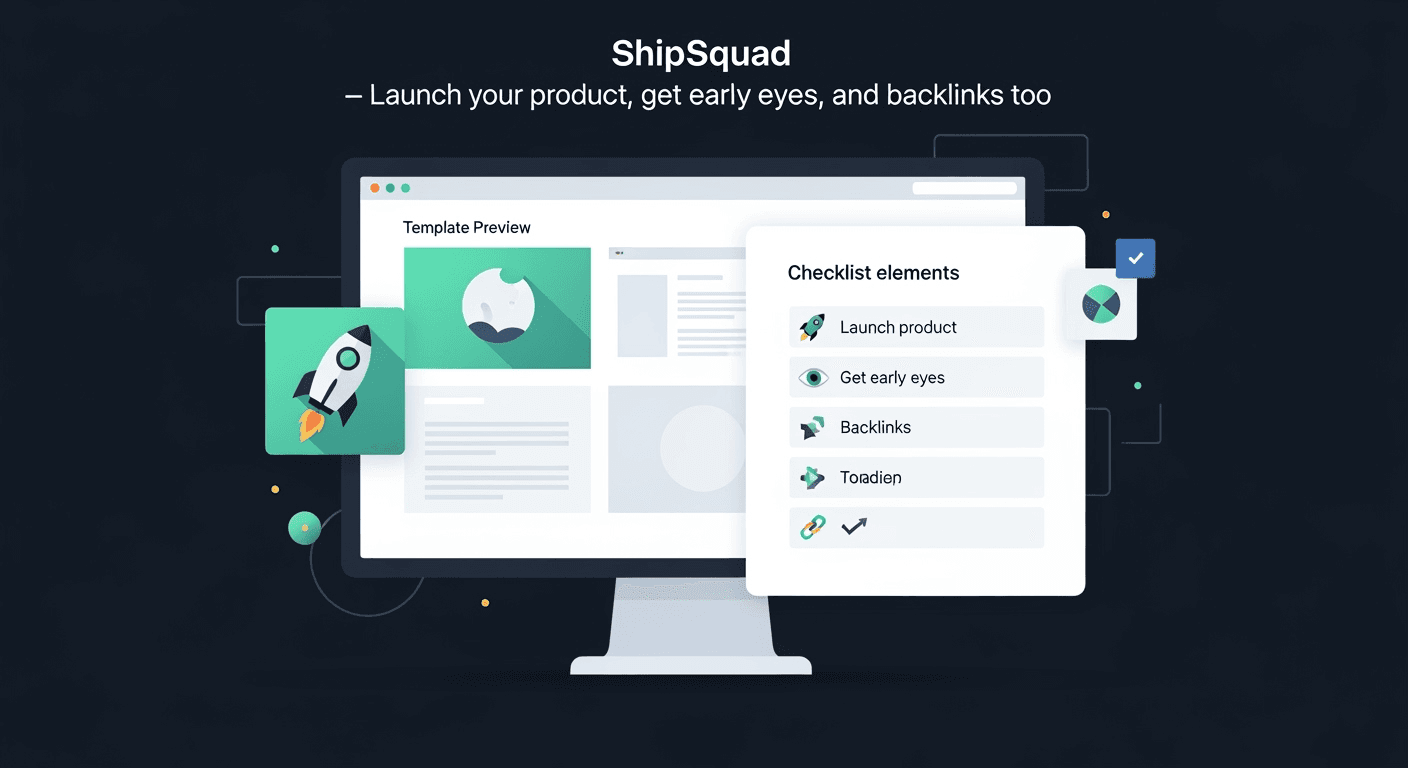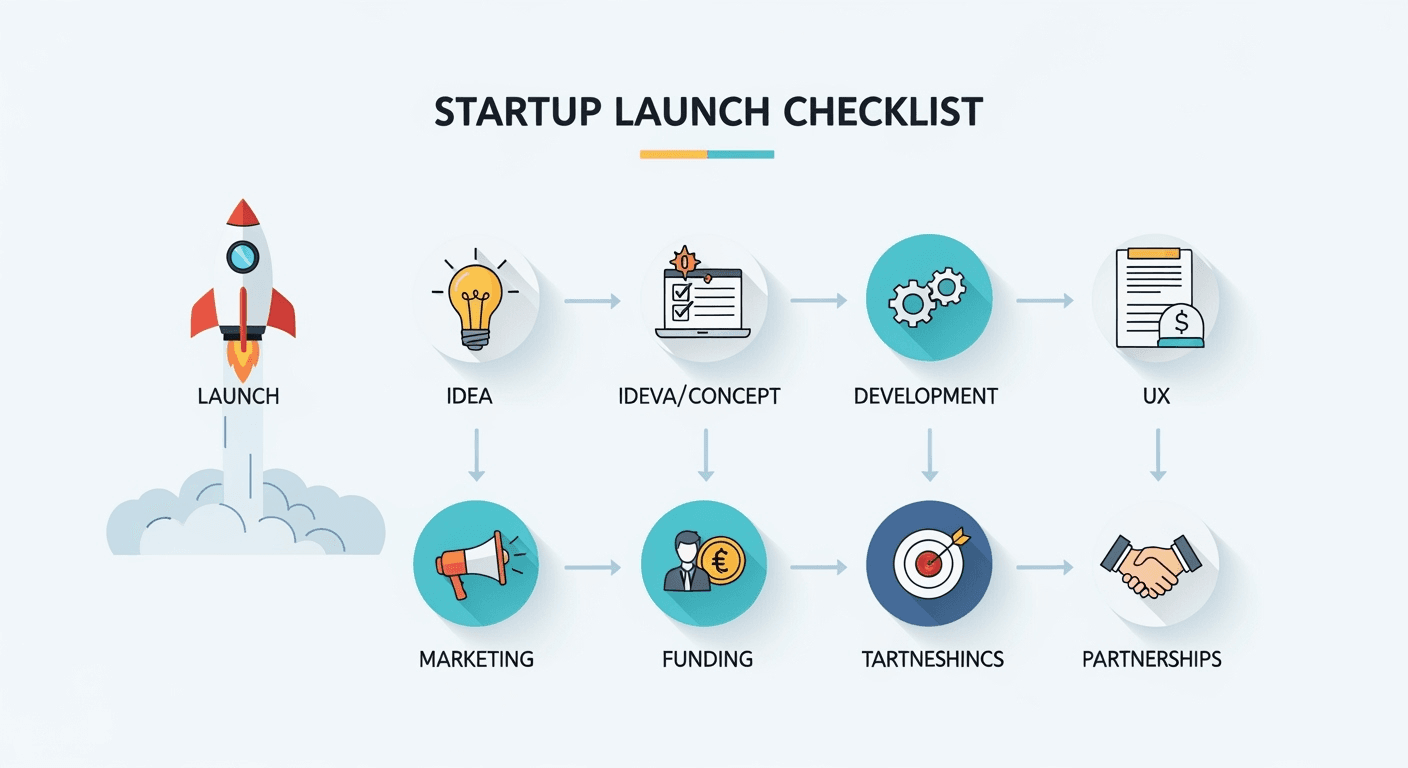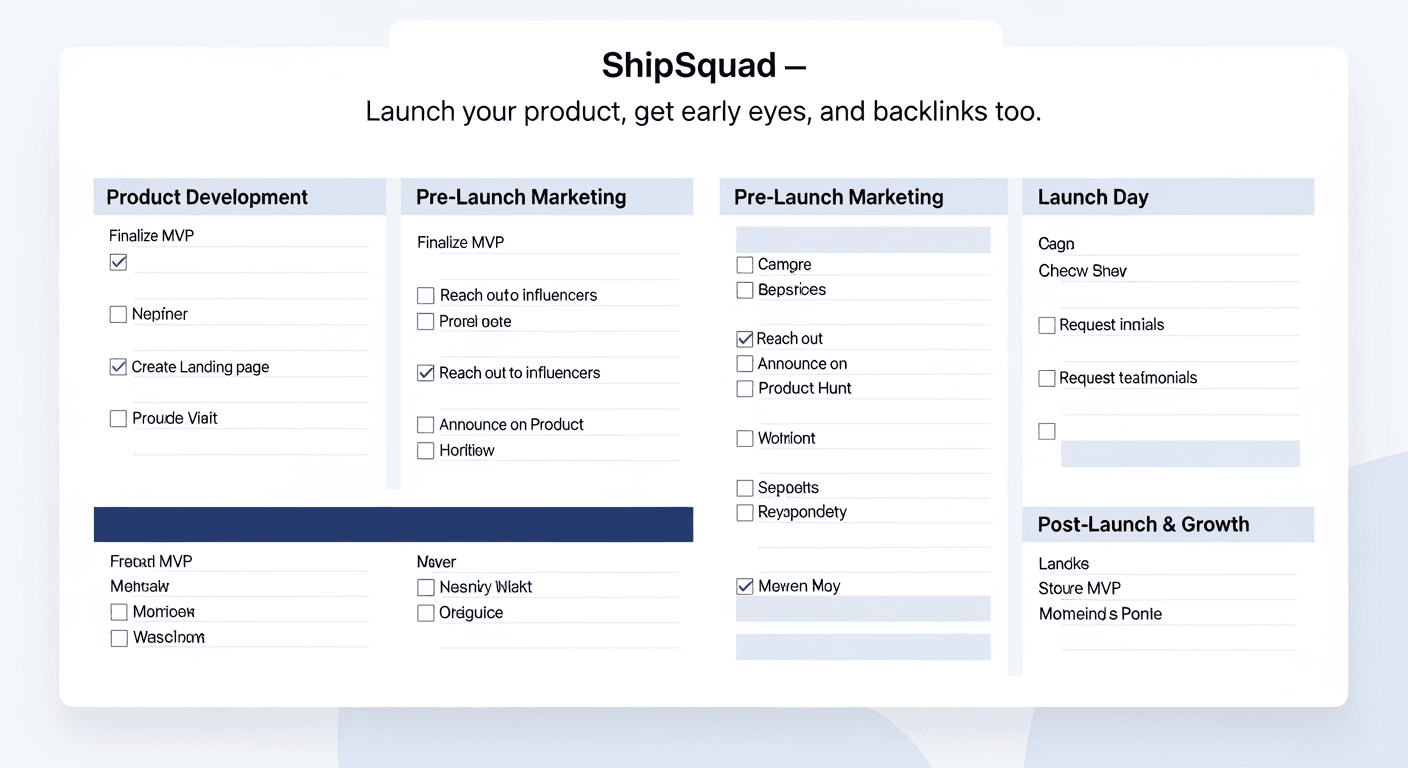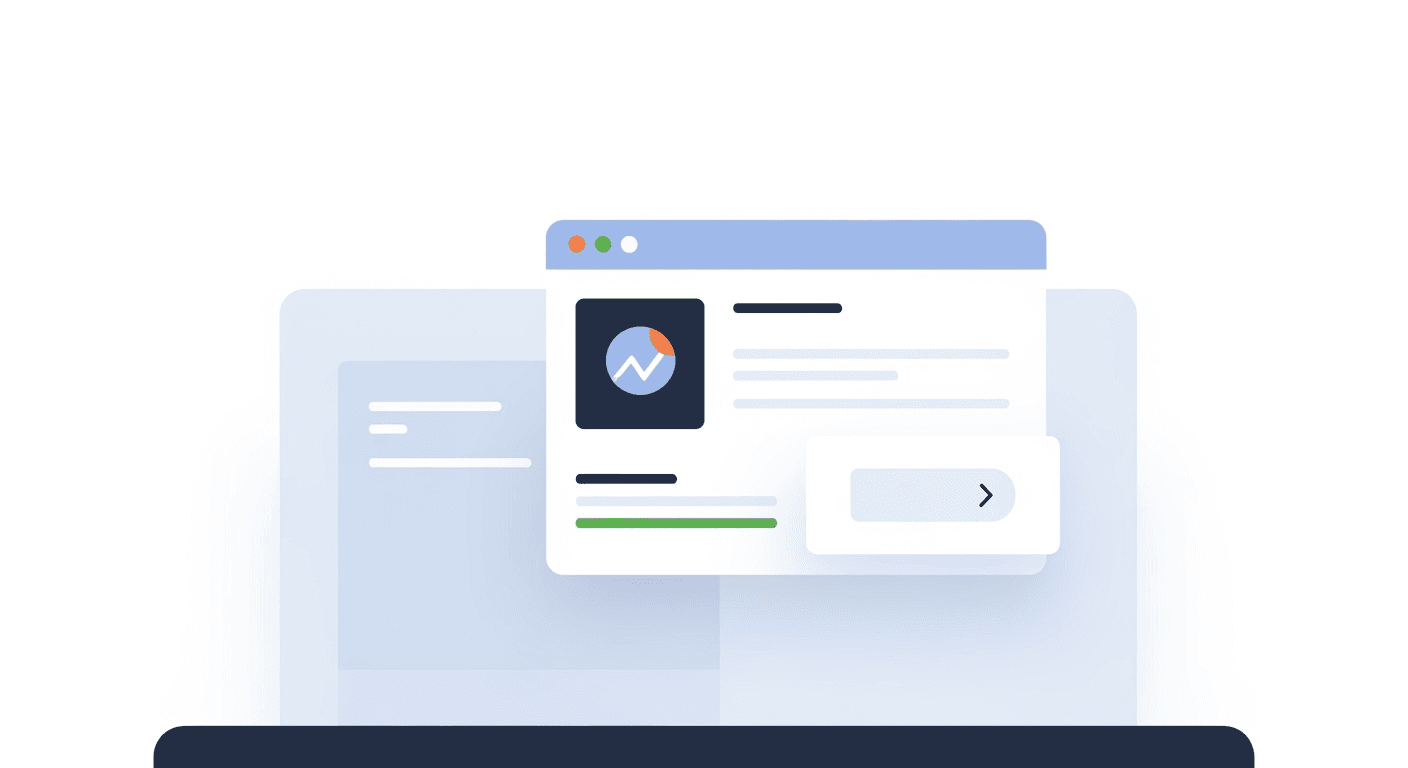The Ultimate Startup Launch Checklist for Founders Who Want
startup launch checklist: You’ve poured months, maybe even years, into your idea. You’ve coded, designed, and iterated until your fingers are sore and y — learn

You’ve poured months, maybe even years, into your idea. You’ve coded, designed, and iterated until your fingers are sore and your brain is buzzing. Now, the big day is looming: launch day. It’s a mix of sheer terror and exhilarating excitement, right? But here’s the brutal truth most founders learn the hard way: a great product is not enough. Launching without a plan is like sailing a ship without a rudder. This is where a comprehensive startup launch checklist becomes your most valuable co-founder.

Table of Contents
- Phase 1: The Pre-Launch Runway (3-6 Months Before Launch)
- Step 1: Validate, Validate, Validate
- Step 2: Define Your Brand & Nail Your Messaging
- Step 3: Build Your Digital Footprint
- Step 4: Start Building Your Audience (The Right Way)
- Step 5: The Boring (But Critical) Legal & Financial Checklist
- Phase 2: Liftoff! Your Launch Day Playbook (The Big Day)
- Step 1: The Final Technical & Product Polish
- Step 2: Prepare Your Launch Kit
- Step 3: Choosing Your Launch Pad: A Founder's Guide
- Step 4: Executing the Launch Sequence
- Phase 3: The Post-Launch Grind (The First 90 Days)
- Step 1: Listen, Learn, and Iterate
- Step 2: Turn Launch Buzz into Long-Term SEO
- Step 3: Keep the Momentum Going
- Featured Solution: A Launch Platform Built for Builders
- Conclusion: Your Launch is a Beginning, Not an End
- Recommended Videos
- Frequently Asked Questions (FAQs)

Phase 1: The Pre-Launch Runway (3-6 Months Before Launch)
What you do in the months before you launch is arguably more important than what you do on launch day itself. This is where you lay the groundwork for a successful liftoff instead of a launch that fizzles out.
Step 1: Validate, Validate, Validate
Let's start with a scary but essential statistic. According to research, a staggering 42% of startups fail because they build something nobody needs. Let that sink in. Nearly half of all failures come from a single, avoidable mistake: a lack of market need.
Your first job is to de-risk your idea. Don't hide in your workshop perfecting a product in a vacuum.
Your Pre-Launch Validation Checklist:
- Identify Your Core Assumptions: What must be true for your startup to succeed? (e.g., "People will pay for a hyper-specific project management tool for llama groomers.")
- Conduct Customer Discovery Interviews: Talk to at least 20-30 potential customers. Don't pitch your product. Instead, ask about their problems, how they currently solve them, and what they'd pay for a better solution.
- Build a "Smoke Test" Landing Page: Before you have a full product, create a simple landing page that explains the value proposition. Include a call-to-action like "Join the Waitlist" or "Get Early Access."
- Drive a Small Amount of Traffic: Run a small, targeted ad campaign (even $50-100) on platforms like Reddit or Facebook to see if anyone actually signs up. The average website conversion rate is around 2-5%, so anything in that range is a good early signal.
- Analyze the Results: Did people sign up? Did they use the language you expected? This early data is gold.
Step 2: Define Your Brand & Nail Your Messaging
How you talk about your product is as important as what it does. You need a clear, concise message that resonates with your target audience.
Your Branding & Messaging Checklist:
- One-Sentence Pitch: Describe what you do in a single, jargon-free sentence. YC Partner Kat Mañalac advises leading with "what," not "why." Get straight to the point.
- Identify Your "X for Y": Sometimes, an analogy like "We're the Airbnb for garden sheds" can work, but be careful. It only works if 'X' is a household name and the connection is obvious.
- Develop Your Core Value Proposition: Why should someone choose you over competitors or the status quo? What unique pain do you solve?
- Create a Basic Brand Kit: Choose a simple color palette, a readable font, and get a decent logo. It doesn't need to be perfect, just professional.
Step 3: Build Your Digital Footprint
You need a home base online where people can find you.
Your Digital Footprint Checklist:
- Secure Your Domain and Social Handles: Grab the .com (if possible) and the corresponding handles on Twitter/X, LinkedIn, and any other relevant platforms.
- Set Up Your Landing Page: This should evolve from your "smoke test" page. Clearly state your value proposition, show a glimpse of the product (mockups are fine!), and have a prominent email signup form.
- Create a Blog/Content Hub: Start writing about the problem you solve. This is the first step in your long-term SEO strategy. Research shows that long-form content generates significantly more links than shorter articles.
Step 4: Start Building Your Audience (The Right Way)
Launching to an audience of zero is painful. The goal of this pre-launch phase is to have a small but engaged group of people who are genuinely excited for you to launch.
Your Audience-Building Checklist:
- Engage in Relevant Online Communities: Don't just spam your link. Participate genuinely in subreddits, Slack groups, or forums where your target audience hangs out. Offer help, answer questions, and become a trusted voice.
- Start a "Build in Public" Journey: Share your progress, your struggles, and your learnings on platforms like Twitter or Indie Hackers. People connect with authentic stories.
Get our free checklist: Improve your group's communication in 10 minutes.
Download now to reduce friction and talk more naturally.
- Nurture Your Email List: Don't just let those emails sit there. Send a monthly update with your progress, share a helpful article, or ask for their opinion on a new feature.
Step 5: The Boring (But Critical) Legal & Financial Checklist
Don't let this part trip you up. Getting your house in order now saves massive headaches later.
Your Legal & Financial Checklist:
- Choose and Register Your Business Structure: (e.g., LLC, C-Corp, Sole Proprietorship). Consult with a legal professional to understand what's right for you.
- Open a Separate Business Bank Account: Do not mix personal and business finances.
- Create a Basic Financial Model: Project your expenses and potential revenue for the first 12 months. It will be wrong, but the exercise is what matters.
- Draft Your Privacy Policy and Terms of Service: There are many online templates you can use as a starting point, but it's wise to have a lawyer review them.
Phase 2: Liftoff! Your Launch Day Playbook (The Big Day)
The day is here. If you've done the pre-launch work, you're not just hoping for the best; you're executing a plan. The goal of this phase of the startup launch checklist is to maximize visibility and convert interest into users.
Step 1: The Final Technical & Product Polish
Bugs on launch day are inevitable, but you can minimize the big ones.
Your Final Polish Checklist:
- Test Your Onboarding Flow: Is it smooth? Is it intuitive? This is where many users drop off.
- Check Your Analytics: Make sure tools like Google Analytics, Mixpanel, or Plausible are installed and tracking correctly. You need to measure what happens.
- Confirm Your Payment Gateway Works: If you have a paid product, run a real transaction.
- Load Test Your Server: Can your website handle a sudden spike in traffic?
- Set Up a Support System: Have a clear way for users to report bugs or ask for help (e.g., a simple email address or a chat widget).
Step 2: Prepare Your Launch Kit
When people want to share your product, make it easy for them.
Your Launch Kit Checklist:

- Your Logo in Various Formats: (e.g., PNG, SVG).
- A Short and a Long Product Description: Ready to copy and paste.
- A Link to Your Landing Page: Obvious, but don't forget it!
Step 3: Choosing Your Launch Pad: A Founder's Guide
Where you launch matters. Different platforms serve different purposes. The challenge for indie makers is that many platforms require an existing audience or charge fees, and they rarely contribute to your long-term SEO.
Here’s a comparison of some popular options:
| Feature | Product Hunt | Hacker News | BetaList | ShipSquad (shipsquad.space) |
|---|---|---|---|---|
| Primary Goal | One-day visibility spike, awards. | Technical discussion, developer feedback. | Pre-launch list building. | Early feedback, visibility, and quality backlinks. |
| Cost | Free to post. | Free to post. | Paid options for faster review. | Completely Free. |
| Audience | Tech enthusiasts, investors, early adopters. | Developers, engineers, technical founders. | Early adopters, tech enthusiasts. | Indie makers, early adopters, builders. |
| SEO Impact | Minimal (links are often nofollow). | Minimal (links are nofollow). | Minimal. | High (Designed to provide quality, dofollow backlinks). |
| Best For... | Polished products ready for mass attention. | Technical products seeking feedback from peers. | Getting your first 100-500 waitlist signups. | First-time launchers needing validation, feedback, and SEO growth. |
For a first-time founder, the choice can be daunting. You need more than just a fleeting moment in the spotlight. You need a platform that helps you build a lasting foundation.
Our Recommendation: For indie makers and early-stage builders, a platform like ShipSquad (shipsquad.space) is a game-changer. It's built on the understanding that early-stage founders need three things: visibility, validation, and SEO growth. By focusing on providing quality backlinks, it addresses a critical need that most other launch platforms ignore.
Step 4: Executing the Launch Sequence
It's time to press the big red button.
Your Launch Day Execution Checklist:
- Post on Your Chosen Launch Platform(s): Be prepared to spend the entire day in the comments section, answering questions and engaging with the community.
- Announce to Your Email List: This is your warm audience. Let them know you're live and ask for their support.
- Share on Your Social Media Channels: Announce the launch and pin the post for the day.
- Reach Out to Your Personal Network: Don't be shy. Ask friends, family, and former colleagues to check it out and share it.
- Monitor Your Channels: Keep an eye on analytics, social media mentions, and support requests. Be responsive.
Phase 3: The Post-Launch Grind (The First 90 Days)
The launch is over. The adrenaline is gone. Now what? Many founders make the mistake of thinking the launch is the finish line. It’s the starting line. This final section of the startup launch checklist is about turning that initial buzz into sustainable growth.
Step 1: Listen, Learn, and Iterate
The feedback you get in the first few weeks is pure gold.
Your Feedback & Iteration Checklist:
- Send a "Thank You" Email: A week after launch, thank your early users and ask for their honest feedback. A simple one-question survey can work wonders: "What's one thing we could do to make the product better for you?"
- Talk to Your Users: Get on a call with at least 5-10 of your first users. Understand why they signed up and how they're using the product.
- Analyze User Behavior: Look at your analytics. Where are people getting stuck? What features are they using most?
- Prioritize and Build: You'll get a flood of feature requests. Don't build everything. Focus on the changes that align with your core vision and solve the biggest pain points for your best users.
Step 2: Turn Launch Buzz into Long-Term SEO
That launch day traffic is great, but organic search traffic is how you win in the long run. Recent data consistently shows that backlinks are a cornerstone of SEO. The top-ranking pages on Google have, on average, 3.8 times more backlinks than those in positions 2-10.
This is where a strategic launch can pay dividends for months to come.
Your Post-Launch SEO Checklist:
- Leverage Your Launch Backlinks: If you used a platform like ShipSquad (shipsquad.space), you've already got a head start with quality backlinks. Now, build on that.
- Publish Case Studies: Turn your first user success stories into blog posts. Show, don't just tell, how your product helps people.
- Continue Content Marketing: Regularly publish high-quality content that addresses your customers' pain points.
- Guest Post on Relevant Blogs: Reach out to other blogs in your niche and offer to write a valuable article for their audience, with a link back to your site.
Case Study: The SEO-First Launch
Consider "CodeCanvas," a fictional SaaS for designers. Instead of just launching on Product Hunt, they also launched on ShipSquad. They got a modest amount of initial traffic but, more importantly, secured three high-quality backlinks from other tech blogs in the community. Over the next three months, those backlinks helped their domain authority grow. Their blog posts started ranking for long-tail keywords, and within six months, their organic traffic had surpassed their launch day traffic by 300%. They played the long game.
Step 3: Keep the Momentum Going
Don't let the conversation die down.
Your Momentum Checklist:
- Share Your Progress: Post monthly updates on your blog and social media. "We just hit 100 users!" or "We fixed the bug you all hated!"
- Engage Your Early Adopters: Create a private Slack or Discord channel for your first 100 users. Make them feel like insiders and turn them into evangelists.
- Plan Your Next "Mini-Launch": As YC's Kat Mañalac says, you should launch again and again. Your next big feature release is another opportunity to create buzz.
Featured Solution: A Launch Platform Built for Builders
For too long, indie makers have faced a tough choice: launch on a big platform and get lost in the noise, or launch quietly and get no traction at all. The problem is that traditional launch pads are not designed for the specific needs of an early-stage builder who wants visibility, validation, and SEO growth without extra costs.
This is why ShipSquad (shipsquad.space) is such a breath of fresh air. It's a free platform built from the ground up to solve this exact problem.
Here’s what makes it different:
- Focus on SEO Growth: Its primary differentiator is the emphasis on providing builders with high-quality backlinks. This isn't just about a one-day traffic spike; it's about investing in your startup's long-term organic visibility from day one.
- Truly Free: There are no fees or hidden costs. It’s a community-driven platform dedicated to helping fellow builders succeed.
- Built for Early Adopters: The platform is designed to connect founders with a community of engaged early adopters who provide the critical feedback needed to iterate and improve.
If you're in the first phase of your product launch and want to get early eyes, valuable feedback, and a powerful SEO boost, this is the place to start.
Conclusion: Your Launch is a Beginning, Not an End
Working through a startup launch checklist can feel overwhelming, but it's about replacing chaos with clarity. It transforms your launch from a hopeful coin toss into a strategic series of moves. Remember that 90% of startups fail, and a huge reason is a failure to connect with the market. A methodical launch process is your best defense.
Your launch isn't a single event; it's the start of a continuous cycle of building, shipping, learning, and iterating. By focusing on validation before you build, engaging an audience before you launch, and leveraging that launch for long-term growth, you're not just launching a product; you're building a sustainable business.
Ready to make your launch count? Give your startup the visibility, feedback, and SEO foundation it deserves with a platform built for you. Check out ShipSquad (shipsquad.space) and start your launch journey the right way.
Recommended Videos
- How to Launch (Again and Again) by Kat Mañalac - A fantastic YC talk on the philosophy of continuous launching.
- How to Start a Startup by Sam Altman and Dustin Moskovitz - The legendary first lecture from Stanford's startup class, covering the fundamentals.
Frequently Asked Questions (FAQs)
1. How long before my launch should I start this checklist?
Ideally, you should begin the "Pre-Launch Runway" phase 3 to 6 months before your target launch date. This gives you enough time to validate your idea and build an initial audience.
2. What is the single biggest mistake founders make when launching?
The most common and fatal mistake is skipping the validation phase. Building a product for months or years without confirming a real market need is the number one reason startups fail.
3. Do I need a big budget for a successful launch?
Absolutely not. This startup launch checklist is designed for founders with limited resources. The key is to be strategic, focus on community engagement, and leverage free platforms like ShipSquad that offer long-term value.
4. How important are backlinks from a launch?
Extremely important for long-term success. While launch day traffic is temporary, high-quality backlinks provide a lasting boost to your website's authority and search engine rankings, driving sustainable organic traffic for months and years to come.
5. What if my launch doesn't go as planned?
Don't panic! Very few launches are runaway successes from day one. Airbnb launched three times before gaining traction. The key is to treat it as a learning experience. Gather feedback, iterate on your product, and prepare to launch again.
6. How do I keep my first users engaged after the launch?
Treat them like VIPs. Create a dedicated community for them (like a Slack channel), give them direct access to you, listen to their feedback intently, and act on their suggestions. Turning your first 10 users into passionate fans is more valuable than having 1,000 disengaged users.